About Brian Rice:
Brian was born on May 25,1958 and his roots are in the small outport of Pilleys Island, Newfoundland, Canada. At the age of nineteen he moved to central Canada in the Sarnia, Ontario area, where he now works in the Petrochemical industry.
His interest in art began in high school, when an art teacher encouraged him. In 1979 he began to paint realistic images of Newfoundland and northern wildlife, using an acrylic medium. He has many admirers of his work and most of the paintings have been sold; many were commissions. In 1998 he did a painting of an old united church (circa 1945) for his hometown heritage society. Prints were made and sold as a fund raiser.
In 1997 he entered an art contest in Sarnia. This contest was held to select a winner to commemorate the new blue water bridge. The painting got an honourable mention and it was reproduced as a limited edition print.
Brian has no formal training in art. He is self taught and learns most from a careful observation of the order and design of the natural world . He believes that “nature is the artwork of a creator/master artist who displays a wisdom and a genius that we have only begun to understand”. His focus is to create art that will cause the soul to search for a deeper meaning in an increasingly chaotic world.
He started striving for a photo realism style in the 1990’s and achieved it to some degree, but, he found the style did not evoke much emotion and set out on a journey to find a style that was realistic but, with a much looser impressionistic approach.
Eighteen of his paintings were on display at his hometown Petrolia Library during the Summer of 2004.
The Painting “The Newfoundland Cabin” appeared in “Guest Gallery “which is a page in the downhomer magazine; www.Downhome.com is the biggest magazine on the Canadian eastcoast with 26,000 subscribers. This magazine also has a gallery and gift shop in St. John’s, Newfoundland which now carries prints of the painting “seasons of life”
Brian’s Websites:
https://paintingsbybrianrice.blogspot.com/
https://sites.google.com/site/paintingsbybrianrice/
In Calm Waters – Acrylic Painting Lesson
Last summer I fished for cod , in Newfoundland, in an area where a lone minke whale was feeding. The water that evening was flat calm and the whale was after some sort of small fish that flickered on the water. It got close to us at times as we fished for cod. This painting tries to capture that moment in time as I remember it. This is an 18′ x 24″ acrylic painting on panel.
Heres a link to read about minke whales.
I prepared my 18” x 24 “ cradled panel with three coats of gesso. On the 2nd and 3rd coat I added a little paynes gray and cobalt blue . I sanded each coat with 220 grit sand paper, and the last coat I sanded with 400 grit sandpaper to get a very smooth surface especially in the bottom half portion of the panel.
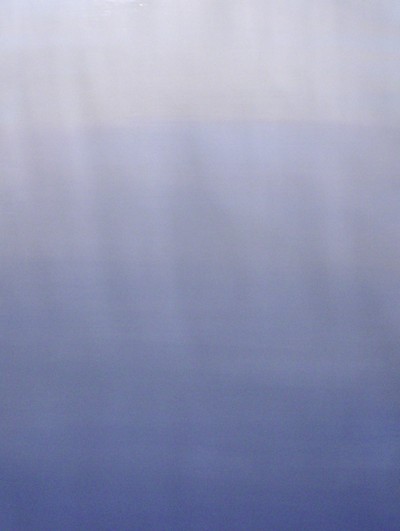
This mid tone of color in the gesso gave me that perfect ground color for further glazing of colors in the water area .
I mixed parchment white , paynes gray, crimson ( napthol red and quin voilet) and cobalt blue with glazing liquid for my first coat of acrylic paint. I blended my painting to get a slow transition from yellow /blue/ gray at the top to deep cobalt blue at the bottom.
Then I glazed in layers of yellows, crimson , cobalt blue in the water to get the effect I needed.
The back ground trees and hills were blocked in with a combination of hookers green and yellow ochre
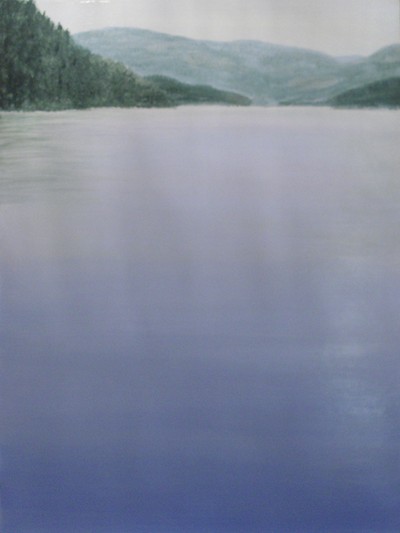
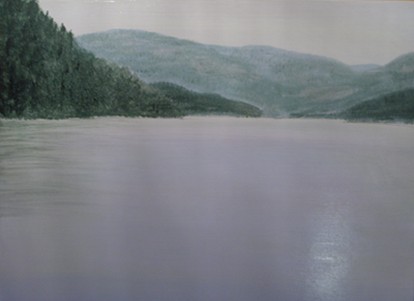
I added more detail in the hills and trees . The sun is going down behind the hill on the left and so a strong shadow and reflection is cast upon the water there. This dark area would later balance the whale color in the center of the painting. I added the ripples on the water . A few more glazes , I think I introduced a little naples yellow at this point.
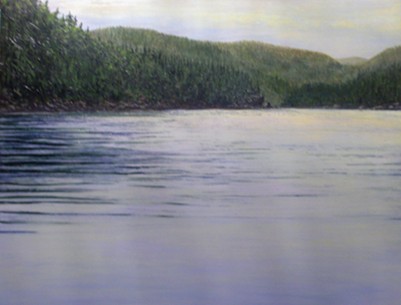
I added texture to the hill on the left to form the trees and help the viewer get a sense of depth and this contrast with the lighter hills in the distance gave a greater sense of aerial perspective.
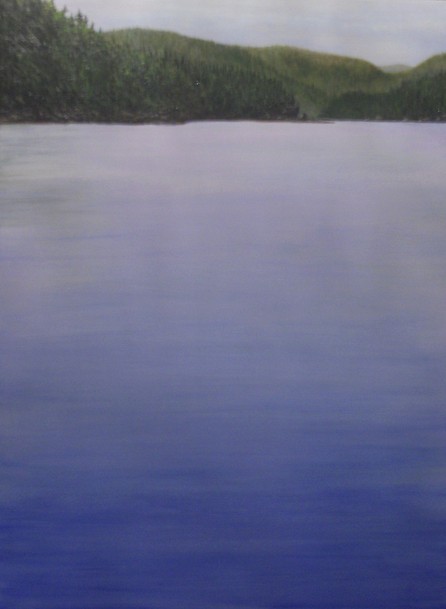
I added the whale in a place that best suited the composition. I know the rule about not putting your main subject focus in the middle but in this case it seemed to work best. The whale is made with cobalt blue and paynes gray.

You can can see the small fish flickering ahead of the whale as the whale dives quickly to try and get a mouth full.
I touched up the trees the rocks etc, with raw umber and paynes grey, and a little parchment white .
I will get a better photo when the sun comes out but this is what I got so far. Your comments are always appreciated.
I made some changes and uploaded a new photo of the final painting.


This painting is absolutely awesome. I love it!
Did you blend the various colors of the water surface using a dry brush technique?